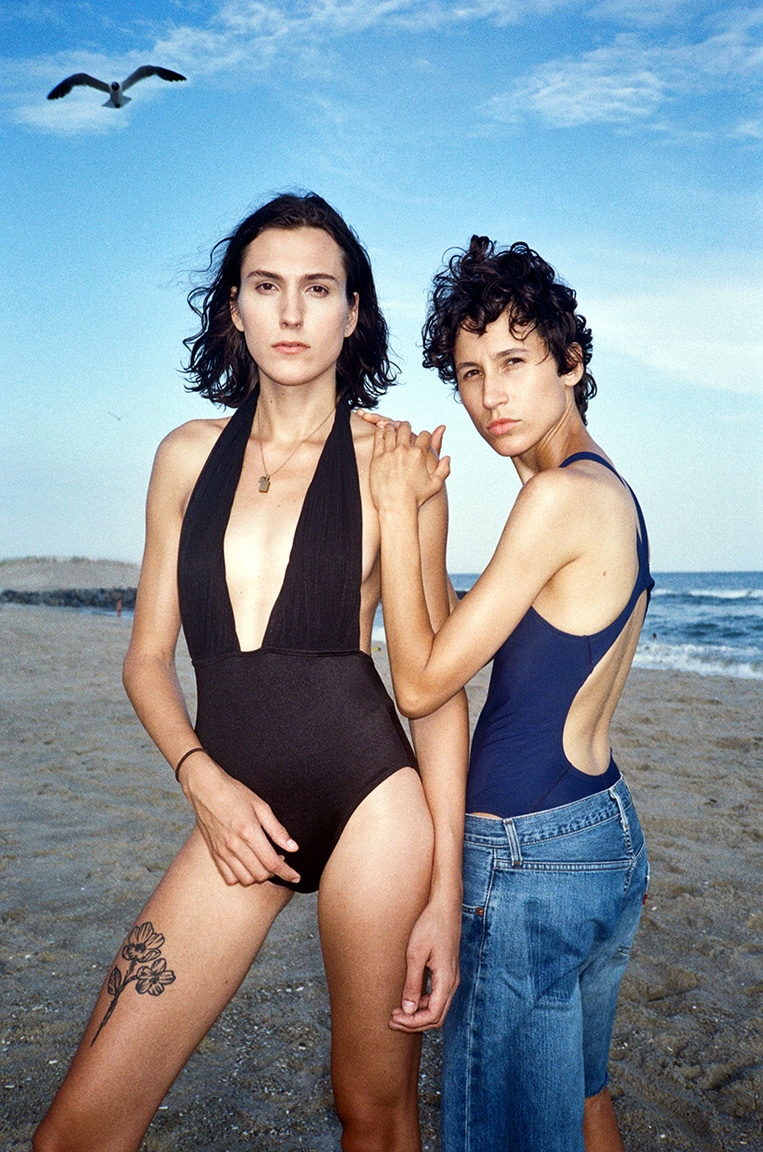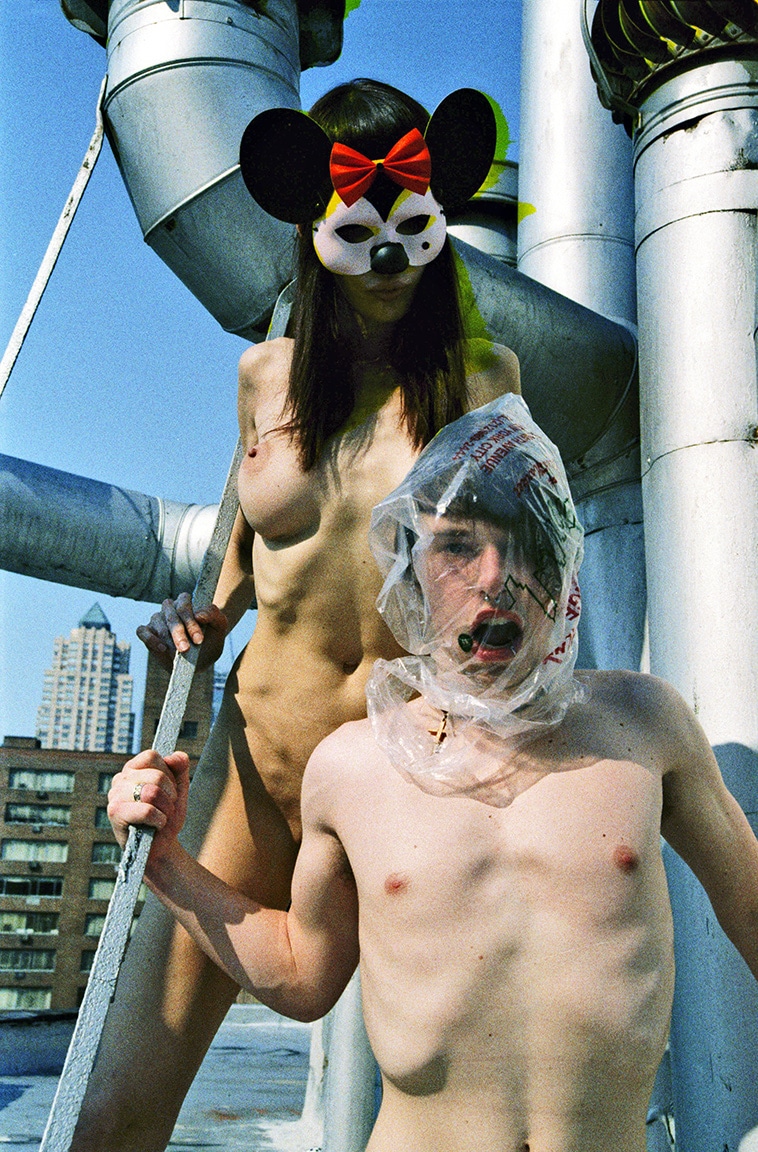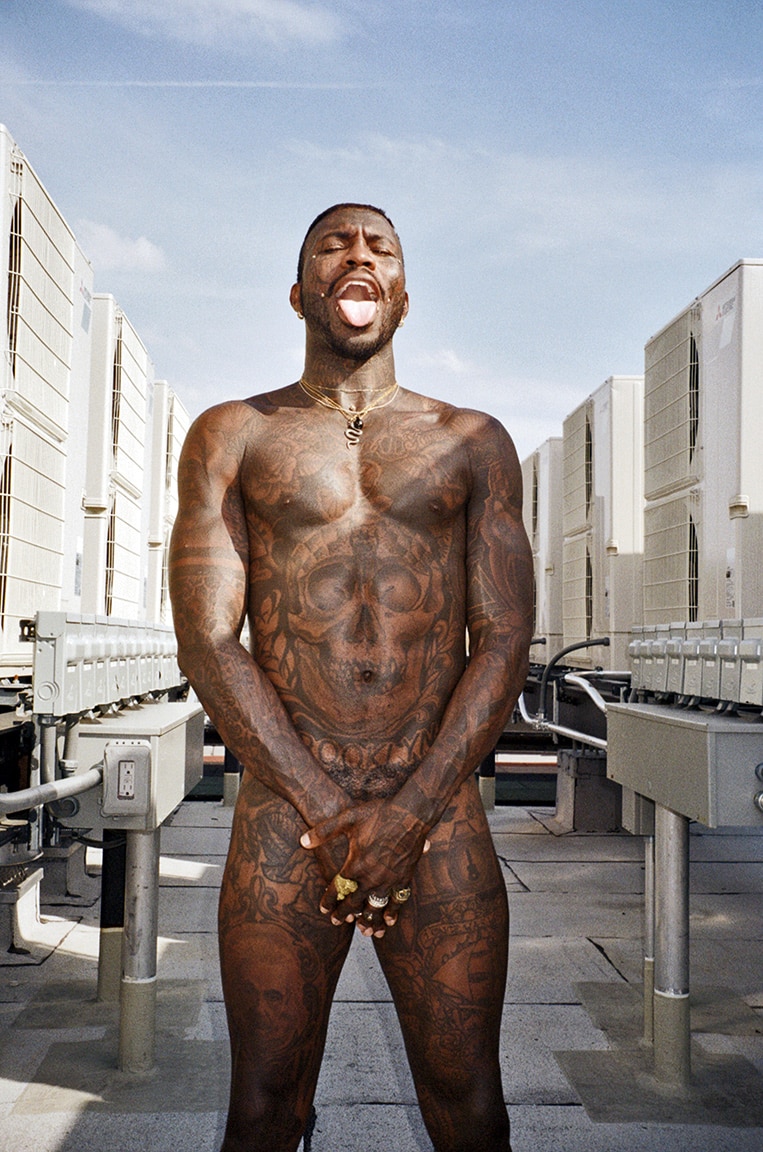
Supercontinent “fashion”: Numéro Berlin in conversation with Emanuele Coccia
Sometimes, says Italian philosopher and author Emanuele Coccia, we forget that for a long…

Informed by his bicultural dissident and refugee experience, Mogutin’s work examines the notions of displacement and identity, pride and shame, devotion and disaffection, love and hate.
Mogutin is the author of seven books of writings in Russian, as well as three monographs of photography and two illustrated collections of poetry published in the US. He has been awarded the Andrei Bely Prize for poetry and the Tom of Finland Foundation Award for artistic achievement.

Slava Mogutin: My visual art is a continuation of my journalism; it’s all about documentation and storytelling. I started taking pictures as a teenager, around the same time that I started writing. I borrowed my dad’s old Soviet FED camera and began taking pictures at underground rock concerts in Moscow and St. Petersburg. But it took me years before I had the confidence to start showing and publishing my photography.
SM: The main focus of my work is documentation of queer communities in New York, LA, Berlin and beyond. As the first openly gay journalist in Russia, I was covering emerging queer culture at a time when homosexuality was still considered a taboo. Essentially, all of my work is about social studies, exploration of human nature, and sexuality in all shapes and forms. I cannot separate my art from activism, and I remain a poet in everything I do.
SM: I believe that journalism is more important now than ever. With freedom of the press under attack and censorship on the rise around the world, photojournalism is a medium that can change people’s lives for the better—by documenting real people and real events, telling the truth and standing up to the authorities. All of my favorite photographers are documentarians, from Alexander Rodchenko, Brassaï and Cartier-Bresson to Diane Arbus, Nan Goldin, Larry Clark and Boris Mikhailov.


SM: Back in Russia, I worked as an editor and translator for the first independent publishers, and I was responsible for publishing important authors such as James Baldwin, William S. Burroughs, Allen Ginsberg and Dennis Cooper. I was and still am a big fan of Jean Genet, Georges Bataille, Henry Miller and Charles Bukowski. And some of my artistic heroes include David Wojnarowicz, Pierre Molinier, Carlo Mollino, Guy Bourdin and Helmut Newton.
SM: I make the best out of being a permanently displaced person. I get bored staying at the same place for too long, and I’m most creative when I travel. My photography is a visual record, an exploration of different subcultures around the world, a travelogue of intimate time capsules worth sharing. Any given place can become universal, and time becomes infinite.
SM: I belong to Generation X, the last generation that grew up before the internet. My first poems and journalism were written by hand or on the typewriter. As an artist, I embraced digital technology early on, and I was quite active on social media platforms like Blogspot and Tumblr. These days, people get most of their news and inspiration from social media, it’s a culture based on narcissism, exhibitionism and immediate gratification. As much as I appreciate virtual reality and digital art, most of my recent work is decidedly analog: Polaroid and film photography, handmade collages, objects and drawings, handwritten poems.
“There’s a whole generation whose minds and creativity have been shaped by these rigid corporate guidelines. It’s a system that creates mediocrity and conformity; one step left or right and you’re going to be censored or banned.”


SM: Just like 20 years ago when I was starting out as an artist, I still consider myself an outsider and anarchist. I don’t subscribe to existing status quos, hierarchies, or power structures. In Russia, the main danger to free speech and artistic expression has always been associated with the government. In the US, giant tech corporations dictate what content is allowed or not, using so-called “community guidelines” to police artistic and queer communities. As a result, there’s a whole generation whose minds and creativity have been shaped by these rigid corporate guidelines. It’s a system that creates mediocrity and conformity; one step left or right and you’re going to be censored or banned.
SM: I’m working on a few shows and book projects, including a book of Polaroids, a series of books based on my extensive film archive called Analog Human Studies, and a book of poems in Russian and English. I’m also editing a new photo collection in collaboration with VTMNTS that was shot over the past few months in Paris, Berlin, Zurich, New York and LA.
SM: I’m not a fashion insider, but over the years, I was fortunate to work with some of my favorite brands both as a model and artist — from HBA and Helmut Lang to Marni, Rassvet, NHIL and, most recently, VTMNTS. Every time I work in fashion, I feel like a queer insurgent, and I’m always bringing my aesthetic and language to every commissioned project. I believe fashion plays a very important role in the lives of so many young people, and it’s in their power to shape a cultural conversation about diversity, freedom of expression, gender and body politics.



SM: Most of my work is quite humorous and joyful. My creative motto is WORK IS PLAY. I really enjoy making drawings between my shoots and editing. I’ve been making them for years, without sharing them much. I recently used some of them as print designs for my collection in collaboration with Rassvet and Dover Street Market Paris. The book I was sharing with you has a working title of I HEART REVOLT. It’s a 100-page collection of poems and drawings in the zine format, set to be published in the fall by the Berlin-based PoGo Books and Outer Space Press.
SM: I’m a humanist, and my work is a celebration of human nature in all its diversity. I believe in the power of art and poetry to change our world for the better, break down the barriers and walls that divide us, and find common ground. If I can contribute to this in any way, I consider my mission accomplished.

“I believe fashion plays a very important role in the lives of so many young people, and it’s in their power to shape a cultural conversation about diversity, freedom of expression, gender and body politics.”

Mogutin’s work is currently on view at AllTogether, a dual exhibition curated by Tom of Finland Foundation and presented by Diesel, at Studio Cannaregio in Venice and The Community Centre in Paris. His STOCK BOYZ series will be on display at Eisenherz Berlin, July 1-31; photography and video in WHO AM I? I AM, curated by Galerie Kernweine, at Staatsgalerie in Stuttgart, July 15-September 11; and in UNZUCHT as part of Instinct Berlin festival, September 8-18.


Sometimes, says Italian philosopher and author Emanuele Coccia, we forget that for a long…
It’s one of Berlin’s event highlights of the year – the Half Marathon. But even…

UGG® has teamed up with Los Angeles-based designer and multidisciplinary artist Reese…